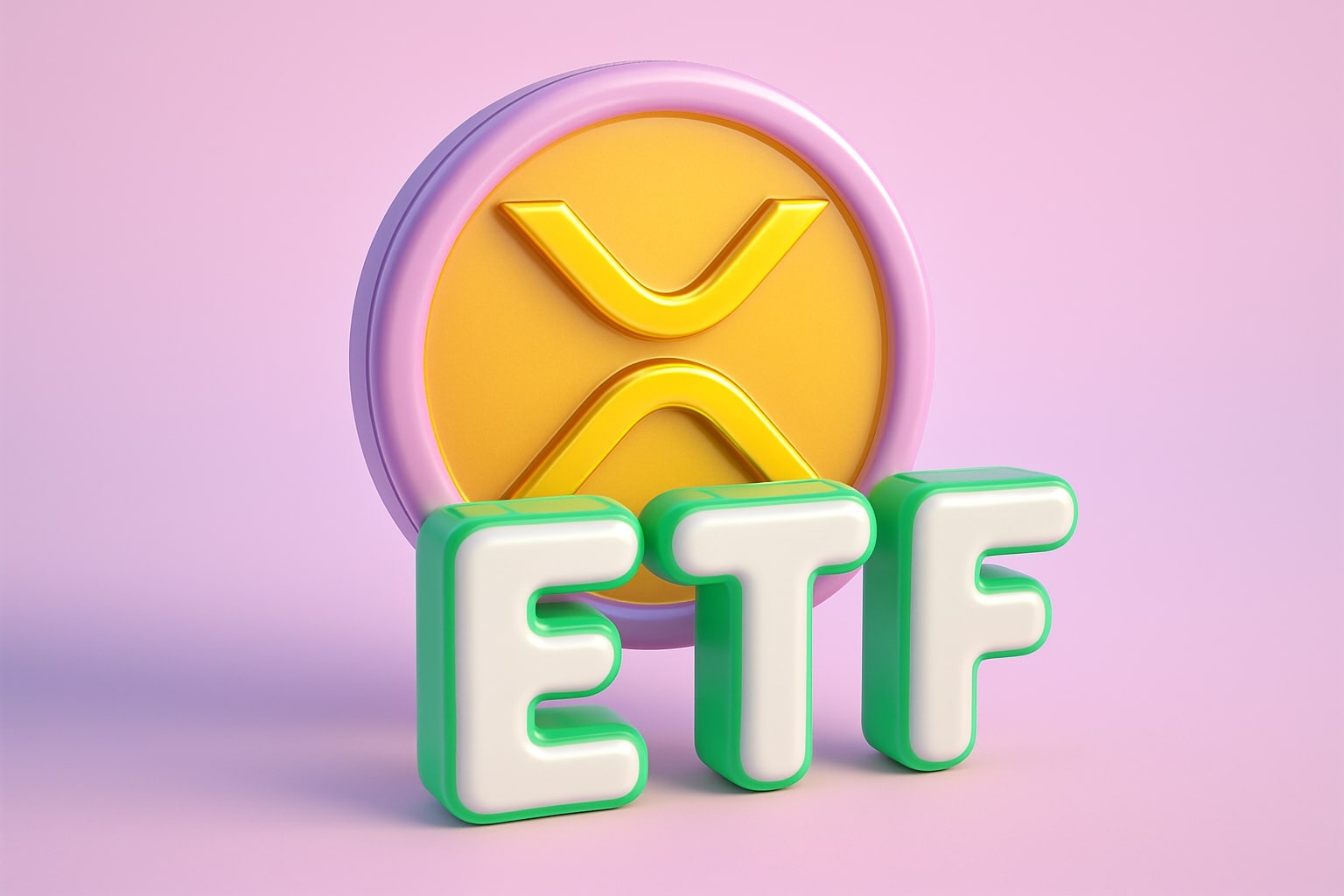
Ethereum Price Forecast - ETH-USD Stalls Near $3,013 as 2.69M ETH Supply Cluster Blocks Breakout Above $3,170
ETH faces persistent selling pressure from long-term holders and a $3,150–$3,170 resistance zone, with liquidity thinning near $3,019 | That's TradingNEWS
Ethereum (ETH-USD) Struggles to Break $3,170 as Supply Clusters, Holder Selling, and Quantum Risks Define Market Pressure
Ethereum (ETH-USD) remains under heavy technical and structural pressure, trading around $3,013, down 1.8% on the day and nearly 23% lower this month. Despite a clear bullish divergence in the RSI indicator, the asset continues to underperform Bitcoin (BTC-USD) as multiple reversal attempts failed below the $3,170 ceiling, a resistance zone now controlling Ethereum’s short-term direction. This price range aligns precisely with the 0.382 Fibonacci level, making it the pivotal barrier to any sustained recovery.
ETH Supply Wall Between $3,150 and $3,170 Continues to Block Breakouts
On-chain cost-basis data reveals a 2.69 million ETH supply cluster concentrated between $3,150 and $3,170, forming one of the heaviest resistance walls in the past year. Every bullish attempt since early November has been rejected at this range. The earlier divergence between Nov. 4 and Nov. 17, which initially appeared to confirm momentum recovery, failed precisely at this same price zone. This repeated rejection indicates sellers dominating market structure and signals that Ethereum’s mid-term breakout requires aggressive buying volume well above this threshold.
Long-term holder behavior confirms the supply-side headwind. The Hodler Net Position Change remains negative, with over 583,000 ETH—roughly $1.76 billion—moved into exchange supply within 24 hours between Nov. 18–19. That represents a net increase of 58,352 ETH in selling activity, underscoring institutional disinterest in absorbing the drop and extending the risk of deeper retracement toward the $3,056–$2,930 zone.
Descending Channel and Wedge Formation Signal Compression Phase
ETH-USD continues to trade within a descending channel, showing narrowing volatility typical of a compression phase preceding a breakout. The lower boundary near $2,930 has consistently attracted buy-side interest, with repeated rebounds confirming demand strength at that level. However, resistance has remained firm at $3,206 and $3,607, forming the upper wedge boundaries.
The Market Facilitation Index (MFI) sits at mid-range, indicating steady but unspectacular participation—no panic selling, but insufficient momentum for a trend reversal. A sustained break above $3,206 would be the first confirmation that the bearish channel is weakening. Until that happens, Ethereum remains technically capped under downward pressure, with bears controlling short-term market structure.
Liquidity Reset Around $3,019 Mirrors Historic Reversal Zones
A significant liquidity reset has formed near $3,019, repeating patterns observed before previous Ethereum rebounds. Historical data from similar liquidity contraction events show that price recovery often follows sharp liquidity depletion. Current market depth remains thin, suggesting volatility spikes ahead. As buy orders rebuild, this reset could evolve into a catalyst for directional movement—but traders must watch for a confirmed daily close above $3,170, which would convert resistance into structural support.
Whales and Institutional Wallets Remain Defensive
Despite the liquidity reset, whales have yet to show aggressive accumulation. Exchange inflow data suggest increased ETH movement from large wallets, signaling short-term hedging rather than accumulation. Institutional cold wallets remain stable, with fewer than 1,000 new addresses accumulating more than 100 ETH in the past week—an unusually low rate compared to previous cycle recoveries. The absence of whale accumulation weakens bullish divergence reliability and confirms that speculative capital, not institutional demand, currently drives intraday moves.
Macro and Policy Factors Deepen Ethereum’s Relative Weakness
Macroeconomic conditions compound Ethereum’s technical strain. The Federal Reserve’s divided policy stance and a delay in key employment data have strengthened the U.S. dollar, pushing the DXY above 100.2 and keeping real yields near 4.12%. These conditions discourage risk-on flows into crypto, particularly into assets like Ethereum that lack the store-of-value narrative Bitcoin enjoys.
Additionally, Tether’s recent $392 million investment in Bitcoin-backed loans and a potential $1.15 billion stake in German AI robotics company Neura confirm institutional preference for Bitcoin-based utility products over Ethereum-linked DeFi exposure. This divergence amplifies ETH’s underperformance relative to BTC, as capital continues rotating toward assets with immediate yield or policy backstops.
Quantum Security Concerns Cast Long-Term Risk Over Ethereum
A major concern emerged after Vitalik Buterin’s statement that Ethereum must complete its transition to quantum-resistant encryption within four years. The window for that migration underscores a potential systemic vulnerability. If progress lags, Ethereum’s current proof-of-stake security model could face obsolescence risk, especially as quantum computing power grows exponentially. While this factor does not yet influence near-term pricing, it restrains long-term bullish sentiment among institutional investors, creating a ceiling for Ethereum’s valuation relative to emerging AI-integrated projects
Read More
-
Meta Stock Price Forecast - Meta Faces $16B Tax Blow and $100B CapEx Shock as Shares Sink to $587
20.11.2025 · TradingNEWS ArchiveStocks
-
XRP Price Forecast - XRP-USD Tests $2.00 as XRP ETF Boom Fails to Halt 11% Weekly Drop
20.11.2025 · TradingNEWS ArchiveCrypto
-
Oil Price Forecast - Oil Prices Recover as U.S. Draw Depletes 3.4M Barrels
20.11.2025 · TradingNEWS ArchiveCommodities
-
Stock Market Today: NVDA +5%, WMT +6%, TSLA +5% Drive Nasdaq to 23,045 in Explosive AI-Led Rally
20.11.2025 · TradingNEWS ArchiveMarkets
-
GBP/USD Price Forecast - Pound Slides Toward 1.3050 as Hawkish Fed and Weak UK CPI
20.11.2025 · TradingNEWS ArchiveForex
Market Momentum and Technical Indicators Confirm Short-Term Bearish Bias
Momentum indicators remain weak. The RSI (38) is near oversold territory but shows no bullish divergence confirmation. MACD histograms stay negative, confirming continuous downward momentum. The 0.5 Fibonacci retracement level at $3,056 acts as the immediate lower pivot. If breached, ETH could fall toward the $2,824 zone, matching the 2024 midrange floor. Conversely, recovery above $3,170 could open upside toward $3,656 and potentially $4,244—the next major Fibonacci extension and top of the descending wedge structure.
Layer 2 Resilience and ZKsync Outperformance Contrast Ethereum’s Slow Recovery
While ETH-USD consolidates, Layer 2 ecosystems such as ZKsync (ZK) show relative strength, declining only 4.6% week-on-week compared with Ethereum’s 15% drop. This divergence validates Buterin’s vision that scalability will migrate to Layer 2. ZKsync’s 112% projected rise to $0.0986 by 2026 highlights investor preference for high-efficiency, low-fee networks. The outperformance underscores Ethereum’s transitional risk: while ETH remains the core settlement layer, yield and transaction growth increasingly migrate off-chain.
AI-Linked Tokens and Market Rotation Undercut Ethereum Demand
The speculative spotlight has shifted toward high-beta AI tokens like DeepSnitch AI (DSNT), which has raised over $555,000 during its presale and already gained 58%. These capital flows reflect a shift toward utility-driven narratives combining artificial intelligence and decentralized analytics—narratives Ethereum once dominated. As AI + blockchain convergence accelerates, Ethereum’s relative lack of differentiated narrative beyond infrastructure weakens speculative inflows.
ETH-USD Outlook: Resistance Defines Trend Until Structural Break Above $3,170
Ethereum remains trapped within a technical and behavioral bottleneck. The $3,150–$3,170 zone defines short-term control, and every rejection from this cluster strengthens bearish conviction. Liquidity compression, holder outflows, and macro tightening all align against immediate recovery. If ETH fails to defend $3,056, selling could intensify toward $2,930 and possibly $2,824, where structural support reappears. Only a confirmed close above $3,170 on strong volume would shift control back to buyers.
Verdict: ETH-USD — HOLD / SHORT-TERM BEARISH, MID-TERM RECOVERY POTENTIAL
The Ethereum setup remains fundamentally strong but technically constrained. Heavy supply clusters, lack of whale accumulation, and long-term holder outflows suppress price expansion. However, liquidity reset patterns and RSI divergence imply that exhaustion among sellers is nearing. Traders should monitor the $3,170 breakout for confirmation of a trend reversal.


















